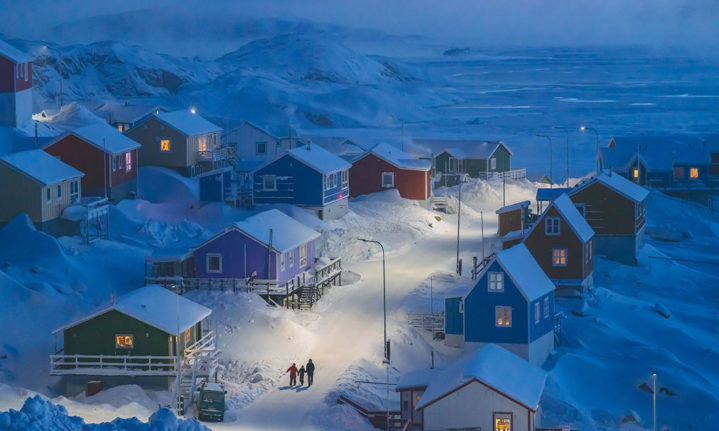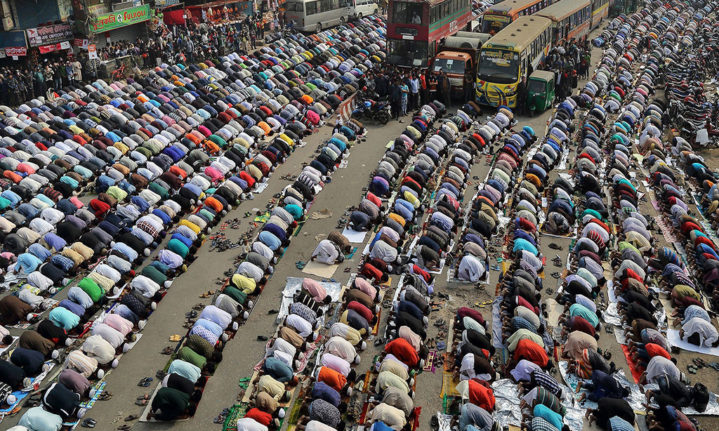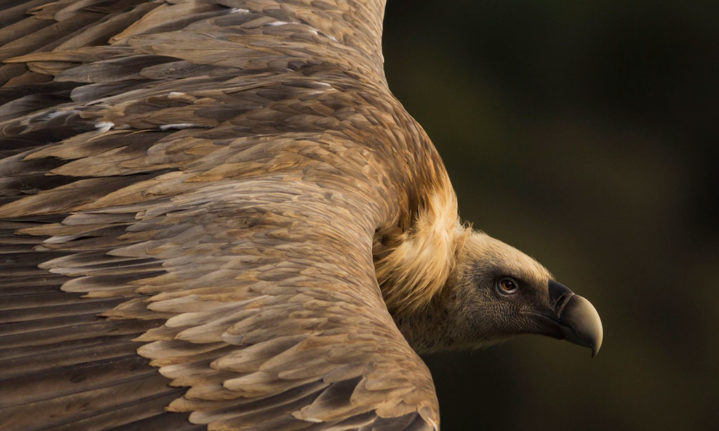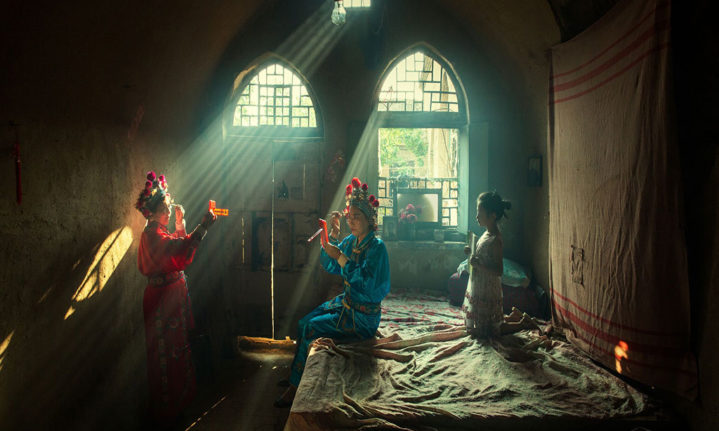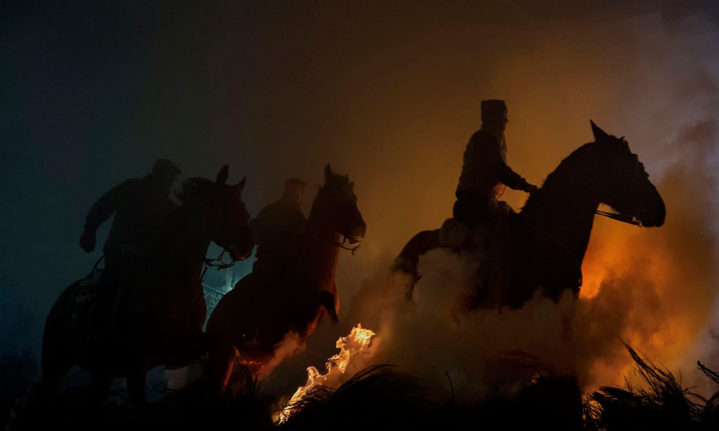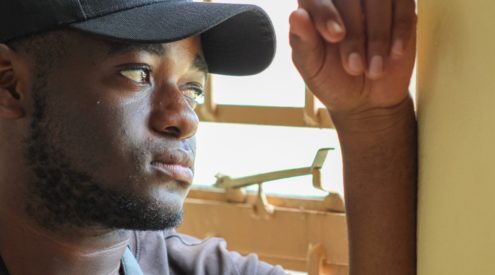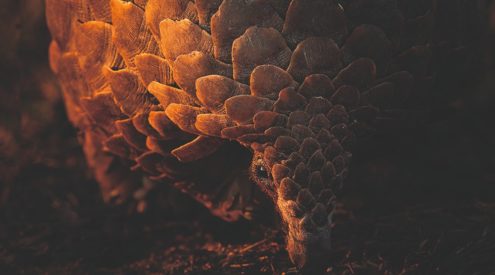The winners of the National Geographic 2019 Travel Photo Contest have been chosen from thousands of entries and were announced this week.
National Geographic is famed for transporting their readers through its images, but through this contest the readers get a chance to share their own photographs with the magazine.
The photos had to be a glimpse into the world of nature, cities or people. Each had to tell a story of place.

The grand prize-winning image, ‘Winter in Greenland’ by Weimin Chu. Chu says: ‘Upernavik is a fishing village on a tiny island in west Greenland. Historically, Greenlandic buildings were painted different colors to indicate different functions, from red storefronts to blue fishermen’s homes—a useful distinction when the landscape is blanketed in snow. This photo was taken during my three-month personal photo project to present life in Greenland.’ Image: Weimin Chu/National Geographic
The grand prize winner, Weimin Chu, says the scene in his ‘Winter in Greenland’ image felt harmonious. ‘The whole land was covered by white, cold snow, and the blue tint at dusk made it even cooler. But the light from the windows, street lights and the family of three made the world warm again,’ says Chu.
‘I love the contrast and mood of this scene. I was busy taking continuous pictures at that time, trying to capture the best moment.’
The grand prize winner will receive over R100,000 and their winning image will be published on the National Geographic Travel Instagram account.
The first-place winner will receive R37,000, the second-place winner will receive R20,000 and the third-place will receive R11,000.
The contest judged the image, not the camera used, so they received entries taken on mobile phones to SLR cameras. However, the photos had to have been taken within the past two years.
Some of the images may look like a dream, but images were not allowed to be manipulated. Elements could not be added, removed, rearranged, inverted or distorted. Only minor colour correction and cropping was accepted. HDR and panoramas were accepted.
‘Submit photographs that are real. We want to see the world through your eyes, not through the excessive use of photo editing tools,’ was the directive given on the contest page.
Browse the other winning images and read the photographers’ captions to learn more about how they got the shot and why they took it:
![Second place, cities. Jassn Todorov says: ‘There are four runways at San Francisco's International Airport (SFO). This is a rare look at the approach end of runways 28 left and right. I had dreams of documenting the motion at SFO and [arranged] permission to fly directly overhead. What a windy day it was. Winds at SFO were 35-45 miles per hour, which meant a bumpy flight, and it was much harder to control the plane while photographing. The flight was challenging, but it was also so thrilling that I couldn't sleep for several days.’](https://www.getaway.co.za/wp-content/uploads/2019/06/second-palce-cities-768x509.jpg)
Second place, in the cities category. Jassn Todorov, the photographer, says: ‘There are four runways at San Francisco’s International Airport (SFO). This is a rare look at the approach end of runways 28 left and right. I had dreams of documenting the motion at SFO and [arranged] permission to fly directly overhead. What a windy day it was. Winds at SFO were 35-45 miles per hour, which meant a bumpy flight, and it was much harder to control the plane while photographing. The flight was challenging, but it was also so thrilling that I couldn’t sleep for several days.’ Image: Jassn Todorov/ National Geographic.
![Third place, cities. Sandipani Chattopadhyay says: ‘People pray on the street in Dhaka, Bangladesh during Ijtema. Bishwa Ijtema is one of the major Islamic religious gatherings which is [observed] annually in Dhaka and millions of Muslims visit [during this time]. Dedicated prayer grounds are not [large] enough to handle this huge number of people, so large numbers of people come to [Tongi], the main street of Dhaka. All the ground transportation and [pedestrian crossings] are suspended during that time.’](https://www.getaway.co.za/wp-content/uploads/2019/06/third-place-cities-768x509.jpg)
Third place, cities. Sandipani Chattopadhyay, the photographer, says: ‘People pray on the street in Dhaka, Bangladesh during Ijtema. Bishwa Ijtema is one of the major Islamic religious gatherings which is [observed] annually in Dhaka and millions of Muslims visit [during this time]. Dedicated prayer grounds are not [large] enough to handle this huge number of people, so large numbers of people come to [Tongi], the main street of Dhaka. All the ground transportation and [pedestrian crossings] are suspended during that time.’ Image: Sandipani Chattopadhyay/ National Geographic.

First place, nature. Tamara Blazquez Haik says: ‘A gorgeous griffon vulture is seen soaring the skies in Monfragüe National Park in Spain. How can anyone say vultures bring bad omens when looking at such tenderness in this griffon vulture’s eyes? Vultures are important members of the environment, as they take care of recycling dead matter. Vultures are noble and majestic animals—kings of the skies. When looking at them flying, we should feel humbled and admire them.’ Image: Tamara Blazquez Haik/ National Geographic.
![Third place, nature. Scott Portelli says: ‘Dusky dolphins often travel together in great numbers in the deep canyons of the Kaikoura, New Zealand in search of food. They glide through the ocean effortlessly, coming up only to breathe. Dusky dolphins are fast and will often keep pace with a speeding boat. I waited on the bow of the boat as the Dusky dolphin almost broke [through the surface]. Their elegance and streamlined bodies are built for speed and maneuverability—accentuated by the smooth, clear water of the New Zealand coastline.’](https://www.getaway.co.za/wp-content/uploads/2019/06/third-place-nature-768x509.jpg)
Third place, nature. Scott Portelli says: ‘Dusky dolphins often travel together in great numbers in the deep canyons of the Kaikoura, New Zealand in search of food. They glide through the ocean effortlessly, coming up only to breathe. Dusky dolphins are fast and will often keep pace with a speeding boat. I waited on the bow of the boat as the Dusky dolphin almost broke [through the surface]. Their elegance and streamlined bodies are built for speed and maneuverability—accentuated by the smooth, clear water of the New Zealand coastline.’ Image: Scott Portelli/ National Geographic.
![First place, people. Huaifeng Li says: ‘Actors prepare for an evening opera performance in Licheng County, China. I spent the whole day with these actors from makeup to [stage]. I’m a freelance photographer, and the series “Cave Life" is a long-term project of mine. In China's Loess Plateau, local residents dig holes in the loess layer [to create cave living spaces, known as yaodongs] and use the heat preservation properties to survive cold winters.’](https://www.getaway.co.za/wp-content/uploads/2019/06/first-place-people-768x509.jpg)
First place, people. Huaifeng Li says: ‘Actors prepare for an evening opera performance in Licheng County, China. I spent the whole day with these actors from makeup to [stage]. I’m a freelance photographer, and the series ‘Cave Life’ is a long-term project of mine. In China’s Loess Plateau, local residents dig holes in the loess layer [to create cave living spaces, known as yaodongs] and use the heat preservation properties to survive cold winters.’ Image: Huaifeng Li/ National Geographic.
![Second place, people. Yoshiki Fujiwara says: ‘This photo was taken at a public park at Choi Hung House in Hong Kong. When I visited during the afternoon, it was very crowded with many young people taking pictures and playing basketball. But when I visited at sunrise, it was quiet and a different place. [The area] is [designated] for neighborhood residents in the early morning, and there was a sacred atmosphere. I felt divinity when I saw an old man doing tai chi in the sun.’](https://www.getaway.co.za/wp-content/uploads/2019/06/second-place-people-768x509.jpg)
Second place, people. Yoshiki Fujiwara says: ‘This photo was taken at a public park at Choi Hung House in Hong Kong. When I visited during the afternoon, it was very crowded with many young people taking pictures and playing basketball. But when I visited at sunrise, it was quiet and a different place. [The area] is [designated] for neighborhood residents in the early morning, and there was a sacred atmosphere. I felt divinity when I saw an old man doing tai chi in the sun.’ Image: Yoshiki Fujiwara/ National Geographic.
![Third place, people. José Antonio Zamora says: ‘Every year on the feast of Saint Anthony the ceremony of the purification of animals, called Las Luminarias, is celebrated in Spain. In the province of Avila, horses and horsemen jump over bonfires in the ritual that has been maintained since the 18th century. The animals [are not hurt], and it is a ritual that is repeated every year. To make the photo, I moved from Seville to San Bartolomé de Pinares because I am very interested in photographing ancestral rites.’](https://www.getaway.co.za/wp-content/uploads/2019/06/third-place-people-768x509.jpg)
Third place, people. José Antonio Zamora says: ‘Every year on the feast of Saint Anthony the ceremony of the purification of animals, called Las Luminarias, is celebrated in Spain. In the province of Avila, horses and horsemen jump over bonfires in the ritual that has been maintained since the 18th century. The animals [are not hurt], and it is a ritual that is repeated every year. To make the photo, I moved from Seville to San Bartolomé de Pinares because I am very interested in photographing ancestral rites.’ Image: José Antonio Zamora/ National Geographic.
Feature image: Weimin Chu/ National Geographic.









